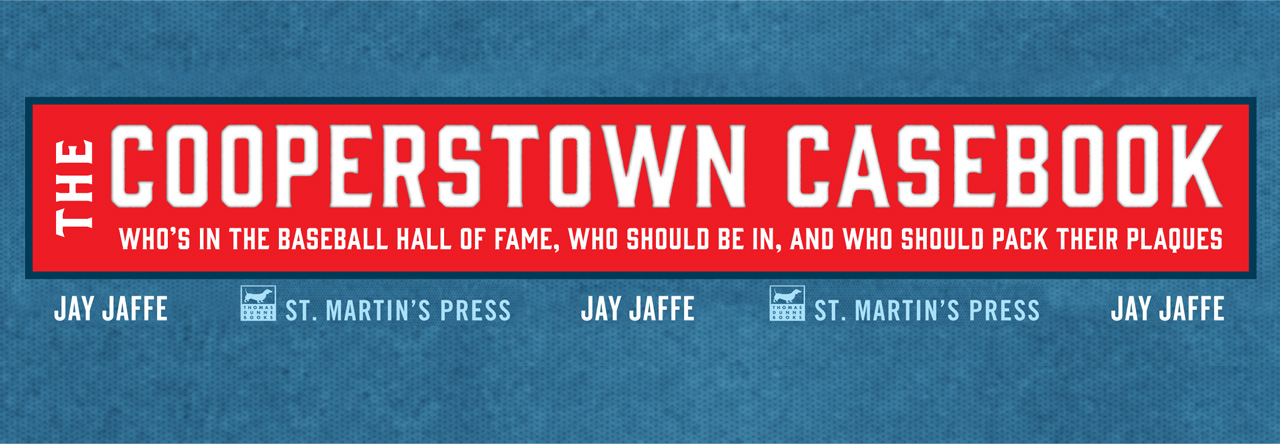8th in JAWS (69.1 Career/42.2 Peak/55.6 JAWS)
Teams: Expos 1979–90, 2001 • White Sox 1991–95 • Yankees 1996–98 • A’s 1999 • Orioles 2001 • Marlins 2002
Stats: .294/.385/425 • 123 OPS+ • 2,605 H • 170 HR • 808 SB
Rankings: 9x top 5 SB • 7x All-Star • 7x top 10 WAR • 6x top 5 OBP • 4x top 10 AVG
All-time: 5th SB
Voting: BBWAA 2017 (10th, 86.0%)
From “Slouching Towards Cooperstown,” the final chapter of the Casebook:
The bigger blow struck for analytics, of course, was the election of Tim Raines in his 10th and final year of eligibility. For far too long, the speedster had taken a backseat—to Fernando Valenzuela among 1981 NL rookies, to Andre Dawson in Montreal, to Rickey Henderson among leadoff hitters, to Tony Gwynn among corner outfielders elected in the late 2000s, and to all too many candidates whom voters squeezed onto their ballots at his expense.
For 10 long years, on the pages of Baseball Prospectus and SI.com, I drew the comparison between Gwynn, he of the 3,141 hits, eight batting titles, and 97.6% share of the vote in 2007, and Raines, with “only” 2,605 hits and one batting title, showing that the latter’s advantages in power and walks plus his 808 steals with an 84.7% success rate put him on the same level—slightly ahead, even—by whatever version of WAR was in vogue that year, and among the top 10 leftfielders of all time.
Yet a year after Gwynn received the seventh-highest voting share of all time, Raines debuted with just 24.3%. Particularly with his eligibility window trimmed from 15 years to 10 by the Hall’s rule change, it took a combination of analytics and grassroots support to jump-start his candidacy. After he dipped to 46.1% in 2014 and then lost those five years, the voters treated his case with urgency. Raines gained 39.9% over the next three years, finally reaching 86.0%.
Watching the 57-year-old Raines beam at the Hall of Fame press conference at New York’s St. Regis Hotel the day after the results were announced—“The writers finally got it right,” he joked—it was difficult not to think of the late Ron Santo, and all the other Hall of Famers who never got to bask in the limelight after being elected, or to recall Minnie Minoso’s plea in his final interview (“I don’t want it to happen after I pass. I want it while I’m here, because I want to enjoy it”).
Links to several of my Raines-related pieces from 2017 and prior:
• JAWS and the 2017 Hall of Fame ballot
• Rock’s road: Tim Raines on his long journey to the Baseball Hall of Fame
• 2017 Baseball Hall of Fame ballot results: Player-by-player breakdown
The fifth modern player elected in his final year of eligibility after Red Ruffing (1967), Joe Medwick (’68), Ralph Kiner (’75) and Jim Rice (2009), Raines experienced the ballot’s biggest jump, that after gaining 14.8% from ’15 (55.0%) to ’16 (69.8). His share of the vote exceeds that of any other last-call honoree (Ruffing’s 86.9% in a run-off, after getting 72.6% on the regular balloting, doesn’t count) and that of any other modern (i.e. post-1966) candidate in his fifth year or later save for Bagwell and 11th-year honoree Duke Snider (86.5%).
This one has some personal resonance, as Raines was both one of my favorite players growing up and one whose Hall of Fame case I’ve been making from the outset, including via one of my first forays at SI.com, back when the site had a content agreement with Baseball Prospectus.
• The Class of 2008: The Hitters, Part Two
• Unconventional Wisdom: Who deserves to be in the Hall of Fame?
